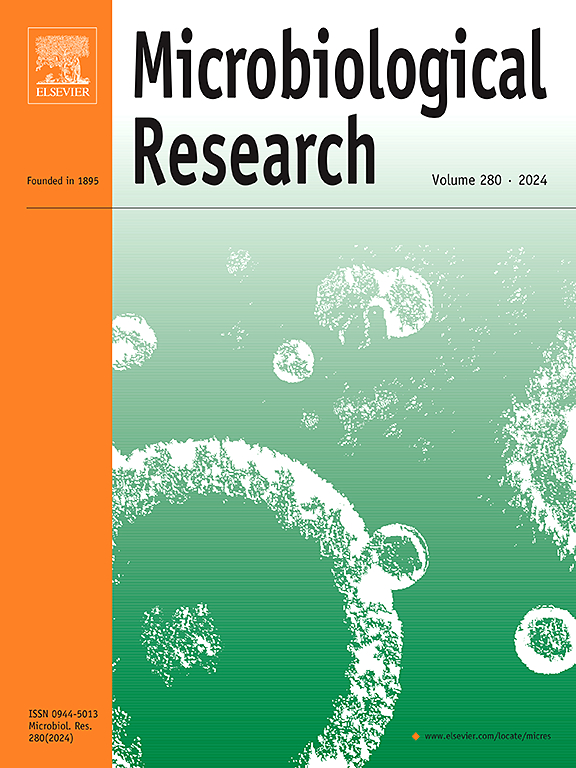谷氨酸棒状杆菌双组分信号转导系统CgtSR1的生物学功能及调控分析
IF 6.9
1区 生物学
Q1 MICROBIOLOGY
引用次数: 0
摘要
双组分系统(TCSs)对细菌适应环境胁迫和生长条件至关重要。谷氨酰胺棒状杆菌是棒状杆菌的一种模式生物,目前已鉴定出13个tcs,但仅有5个已被鉴定。ncgl0269-ncgl0268基因簇被标注为假定的TCS(指定为CgtSR1),其调控作用和机制尚不清楚。本研究通过转录组学分析发现,CgtSR1可能调控抗菌外排转运体(包括二级转运体和一级转运体- atp结合盒(ABC))的表达。EMSA实验证实,CgtR1直接结合3个二级转运基因(ncgl0887、ncgl1020和ncgl1445)的启动子区域。表型分析表明,cgtSR1的缺失增加了对庆大霉素和大观霉素的敏感性,而其过表达则赋予耐药性。此外,cgtSR1的过表达增强了细胞对间苯二酚和2,4-二羟基苯甲酸盐的耐受性。本研究阐明了CgtSR1的调控网络,加深了对tcs介导的谷氨酰胺胁迫适应的认识,为进一步的机制研究提供了基础。本文章由计算机程序翻译,如有差异,请以英文原文为准。
Biologically functional and regulatory analysis of a two-component signal transduction system CgtSR1 in Corynebacterium glutamicum
The two-component systems (TCSs) are crucial for bacterial adaptation to environmental stresses and growth conditions. In Corynebacterium glutamicum, a model organism of Corynebacteriales, 13 TCSs have been identified, but only five of them have been characterized previously. The ncgl0269-ncgl0268 gene cluster, annotated as a putative TCS (designated as CgtSR1), remains unexplored in terms of its regulatory role and mechanism. In this study, we revealed that CgtSR1 might regulate the expression of antimicrobial efflux transporters (including secondary transporters and primary transporters-ATP-binding cassette (ABC)) by transcriptomic analysis. EMSA experiments confirmed that CgtR1 directly binds to the promoter regions of three secondary transporter genes (ncgl0887, ncgl1020, and ncgl1445). Phenotypic assays demonstrated that the deletion of cgtSR1 increased susceptibility to gentamicin and spectinomycin, whereas its overexpression conferred resistance. Additionally, overexpression of cgtSR1 enhanced tolerance of cells to resorcinol and 2,4-dihydroxybenzoate. This study elucidates the regulatory network of CgtSR1 and deepens the understanding of TCS-mediated stress adaptation in C. glutamicum, providing a basis for further mechanistic investigations.
求助全文
通过发布文献求助,成功后即可免费获取论文全文。
去求助
来源期刊

Microbiological research
生物-微生物学
CiteScore
10.90
自引率
6.00%
发文量
249
审稿时长
29 days
期刊介绍:
Microbiological Research is devoted to publishing reports on prokaryotic and eukaryotic microorganisms such as yeasts, fungi, bacteria, archaea, and protozoa. Research on interactions between pathogenic microorganisms and their environment or hosts are also covered.
 求助内容:
求助内容: 应助结果提醒方式:
应助结果提醒方式:


